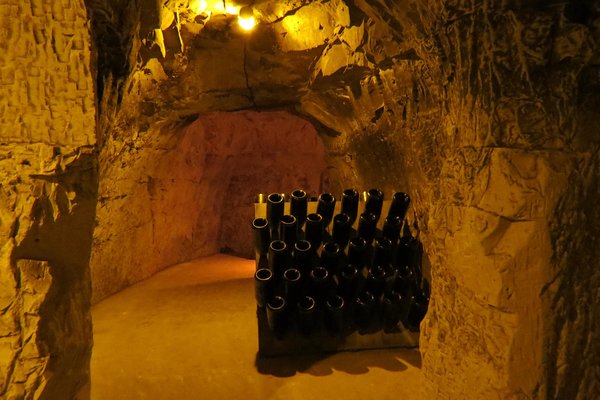France
Champagne
'Champagne Hillsides, Houses and Cellars' is a cultural landscape shaped by the production of sparkling wines since the 17th century.
This is a living and working environment, with trade towns, prestigious commerce houses and the underground heritage of the wine cellars in former chalk quarries. The agro-industrial part includes the vineyards and the processing sites.
Community Perspective: This site focuses more on the industrial and commercial process of champagne production than on vineyards, so it’s appropriate to visit one of the Champagne Houses, that’s also the way to get into one of the chalk cellars. All major brands (Pommery’s, Taittinger) offer popular tours.
Site Info
Official Information
- Full Name
- Champagne Hillsides, Houses and Cellars (ID: 1465)
- Country
- France
- Status
-
Inscribed 2015
Site history
History of Champagne
- 2016: Name change
- Name in French changed to 'Coteaux, Maisons et Caves de Champagne'.
- 2015: Inscribed
- Inscribed
- Type
- Cultural
- Criteria
- iii
- iv
- vi
Links
- UNESCO
- whc.unesco.org
- Official
-
- champagne-patrimoinemondial.org — Paysages du Champagne
All Links
UNESCO.org
- whc.unesco.org — whc.unesco.org/
Official Website
- champagne-patrimoinemondial.org — Paysages du Champagne
News Article
- Jan. 2, 2021 washingtonpost.com — Fewer people than usual will pop bottles of bubbly at midnight. Pour one out for France’s Champagne region.
- Nov. 7, 2015 luxurydaily.com — Moët & Chandon renovates cellars after UNESCO heritage site honor
Community Information
- Community Category
- Cultural Landscape: Continuing
Travel Information
Ile-de-France Hotspot
Recent Connections
-
Asterix
Reims as Durocortorum in Le Tour de Gau…
-
Chalk
on cool, chalky land, the Champagne Hil…
-
Perfect Inscriptions
2015
Connections of Champagne
- Individual People
-
-
Napoleon was here
The Moët & Chandon cellars feature the imperial gallery with the Napoleon I barrel, given to Jean-Remy Moët by the emperor. A small plaque pays homage to Napoleon by recalling the date of his visit (July 27, 1807). (Nomination file, p. 151, 199)
-
- Trivia
-
-
Tour de France
The Avenue de Champagne in the Tour de France 2014, Stage 7 and the Tour de France Femmes 2022, Stage 3 -
Subterranean Cultural Sites
underground cellars -
Role of Women
"(...) the transition from an artisanal crop to mass production of a product sold around the world. Women and the Franco-German heirs of the old Champagne fairs played a special role in this evolution (...)." – "Women have also played a key role, whether famous widows of the big Houses or lesser-known female wine-growers." (Executive Summary, p. 47) - Champagne is as much the fruit of its terroir as of human creative genius, embodied in particular by leading women from the local bourgeoisie who, like Madame Ponsardin known as the Veuve Clicquot or Madame Pommery, brought major technical, commercial and social developments to their House. The edifying presence of these businesswomen is an exception in the French and European industry of the 19th century. (Nomination file, p. 24) -
Built or owned by Germans
Among the most famous Houses, several have their origins in a German personality or family (Krug, Bollinger, Mumm, Heidsieck, etc.). (Nomination file, p. 254) – The Château de Pékin was built by François Abelé, originally from Wurtemberg. (Nomination file, Annexe 2, p. 137) -
Hotels in Historic Buildings
The former Maison Castel Jeanson in Aÿ (Nomination file, p. 68) - Hôtel-Château des Crayères on the colline Saint-Nicaise, originally built by the Pommery family (Nomination file, p. 100)See fr.wikipedia.org
-
Michelin-starred restaurants in Monuments
Domaine Les Crayeres ** -
Underground Boundaries
The UNESCO Maps of Reims and Epernay show the inscribed areas as pink for overground and a blue line for underground (The "Caves"). The latter sometimes extend beyond the former – but are always within the buffer zone (Orange)See whc.unesco.org
-
- History
-
-
Medici
After its destruction by the Huguenots in 1564, Hautvillers Abbey was rebuilt thanks to the donations of Catherine de Medici.See fr.wikipedia.org
-
History of Aviation
The first city-to-city flight was made in Champagne by Henri Farman, who linked Bouy, near Châlons, to the Pommery estate in Reims (Parc Pommery). The Pommery House received its visitor with the honours he deserved and celebrated the event. (Nomination file, p. 228-229) -
Normans
Hautvillers Abbey was destroyed by the Normans in 882. (Nomination file, Tome III, p. 13)See fr.wikipedia.org
-
- Ecology
-
-
Chalk
on cool, chalky land, the Champagne Hillsides, Houses and Cellars form a very specific agro-industrial landscape (OUV statement)
-
Dripstone
The caves of the Montebello Castle feature soda straws, fine stalactite formed from a natural tube of calcite concretion (Nomination file, Annexe 2, Inventaire du patrimoine industriel du champagne, p. 47) -
Notable Trees
A sophora at the Hôtel Moët on the Avenue de Champagne, nicknamed "the Tree of the Three Emperors" under which Napoleon I on March 17, 1814, then the Tsar of Russia, the King of Prussia and the Emperor of Austria, on March 21, 1814, are said to have rested while drinking Champagne. (Nomination file, p. 119)
-
- Architecture
-
-
Vernacular architecture
"the historical chalk hillsides of Hautvillers, with the village at the top, and its landscape and vernacular heritage" (AB Ev) - The hillsides combine a landscape and vernacular heritage representative of the management of the Champagne vineyard, the grape supply system and the production of winegrowers and cooperatives. (Nomination file, p. 25) -
French (formal) garden
The garden of the Hôtels Chandon and Trianon. (Nomination file, p. 123) - The part of the park centred on the Town Hall of Epernay on the Avenue de Champagne is French-style, to enhance the building's classic and sober façade. It consists of a grassy path and then two symmetrical access ramps arranged in a horseshoe shape around a fountain.See fr.wikipedia.org
-
Garden City Movement
"On the Saint-Nicaise Hill in Reims, the cluster comprises the Champagne Houses, their underground cellars and the workers' garden-city of Chemin Vert." (AB Ev) - Georges Charbonneaux wanted to build a garden city based on the English model theorized by Ebenezer Howard. At the end of the war, in 1919 he began building a garden city of 617 houses, with exceptional social and cultural facilities for the time. (Nomination file, p. 110-112)See fr.wikipedia.org
-
Gothic
The old abbey church of the Abbey of Hautvillers is built in three different architectural styles: Romanesque, Gothic and flamboyant. (Nomination file, p. 75) + Church of Saint-Brice d'AySee fr.wikipedia.org
-
Gothic Revival
In the 19th century, the widow Pommery developed the business, had 18 kilometres of cellars dug and built large buildings in the Elizabethan neo-Gothic style in the Butte Saint-Nicaise district of Reims.See fr.wikipedia.org
-
Art Deco
Charles Heidsieck Pavillon and the Saint Nicaise Church of the Chemin Vert garden city on the Saint Nicaise hill. (Nomination file, p. 107; Tome III, p. 68) The Villa Demoiselle is a mix of Art Nouveau and Art Deco, anchored in a period when the shift from one trend to the other was not a clear break. The exterior of the building responds more to the Art Deco movement. The headquarters of Champagne Moët & Chandon on the Avenue de Champagne is also in the art deco style. (Nomination file, p. 145) -
Stand-alone Rock Reliefs
In her cellars in the Saint Nicaise hill, Madame Pommery had a series of bas-reliefs made by Gustave André Navlet between 1882 and 1885. These are sculpted in the soft chalk of the chalk pits and sometimes reach 10 meters long by 6 meters wide. The Veuve Clicquot cellars feature high reliefs sculpted by Navlet. These works, commissioned by Alfred Werlé, successor to Madame Clicquot, were created between 1907 and 1914. Bas-reliefs by Navlet can also be seen in the cellars of the Maison Mercier under the Avenue de Champagne. (Nomination file, p. 103, 106, 152, 261) -
Neoclassical architecture
"the Château de Montebello (...) is a fine neoclassical building" (AB Ev) – Hôtels Moët, Trianon and Chandon, Hôtel Gallice and Maison Perrier-Jouët on the Avenue de Champagne (Nomination file, p. 122-123, 138)See fr.wikipedia.org
-
Reinforced Concrete
Reinforced concrete was used for several buildings of the Veuve Clicquot estate and for the Charles Heidsieck Pavillon, all on the Saint Nicaise Hill. It was also used for the buildings of the Maison Pol Roger and the headquarters of Champagne Moët & Chandon on the Avenue de Champagne and for the tower of the Castellane estate. (Nomination file, p. 105, 107, 139, 141, 144) - The Church of Saint-Nicaise was made with modern materials, such as reinforced concrete and moulded glass.See fr.wikipedia.org
-
Designed by Paul Landowski
The statue "Le premier architecte" in the Parc de la Butte Saint Nicaise in Reims (Nomination file, Tome III, p. 124)See fr.wikipedia.org
-
Domes
The bell tower of the abbey church of Hautvillers is crowned by a square slate dome surmounted by two campaniles. (Nomination file, p. 75) -
Brick architecture
Champagne houses, such as the Maison Deutz and the Maison Ayala. Brick has also been used in the traditional cellars in Hautvillers and for the ventilation chimneys. (Nomination file, p. 64, 67, 78, 79) - Several buildings on the Avenue de Champagne, e.g. Château de Pékin, Hôtel Papelard, Château Perrier, the former buildings of Piper-Heidsieck, the Pol Roger buildings + Fort Chabrol (Nomination file, p. 124, 128, 136) -
Mosaic art
The mosaic floor of the large entrance hall of the Hôtel Moët on the Avenue de Champagne features clovers. The Hôtel Auban-Moët, the Château Gallice and the Maison Champagne de Castellane also have mosaic floors in their vestibule. (Nomination file, Tome III, p. 76, 79; Annexe 2, p. 122, 169) -
Romanesque
The old abbey church of the Abbey of Hautvillers is built in three different architectural styles: Romanesque, Gothic and flamboyant. (Nomination file, p. 75) -
English garden
Park of the Hôtel-Château des Crayères on the colline Saint-Nicaise. (Nomination file, p. 100) - The parks and gardens of the Avenue de Champagne are for the most part inspired by the English landscaped garden, e.g. gardens of the Hôtel Gallice and the Château Perrier. (Nomination file, p. 128, 134)See fr.wikipedia.org
-
Art Nouveau
The interior of the Villa Demoiselle (former Villa Cochet) – The interior of the Hôtel Guyot and the buildings of Champagne de Castellane in Epernay (Nomination file, p. 96, 125)See fr.wikipedia.org
-
- Damaged
-
-
Damaged in World War I
Garden-city of Chemin Vert: "The buildings, erected in the second half of the 19th century, suffered major destruction during World War I but were rebuilt as exact copies." (AB Ev) The Pommery production site and Ruinart site on the Saint Nicaise hill suffered great damages during World War I. (Nomination file, p. 96; Tome III, p. 53) - The Avenue de Champagne also suffered great damages, e.g. former buildings of Piper-Heidsieck, Jardin de l'Orangerie, Maison Pol Roger, Hôtel Moët, industrial buildings of Moët & Chandon. (Nomination file, p. 139; Tome III, p. 76, 80)See fr.wikipedia.org
-
Damaged in World War II
During the Second World War, Aÿ was hit by deadly bombings, during which the city centre was completely destroyed. On August 11, 1944, a bombing killed more than 60 inhabitantsSee fr.wikipedia.org
-
- World Heritage Process
-
-
Perfect Inscriptions
2015
-
- Religion and Belief
-
-
Christian Pilgrimage Sites
Hautvillers Abbey: "In 841 a priest from Reims stole the relic of the body of Saint Helena from Rome and the reliquary was transferred to the abbey. The relics attracted pilgrims and the revenues allowed the abbey to purchase lands and vineyards in the vicinity (40 hectares)."See en.wikipedia.org
-
Religious Relics
Hautvillers Abbey: "In 841 a priest from Reims stole the relic of the body of Saint Helena from Rome and the reliquary was transferred to the abbey. (...) The remaining relics of St. Helena stayed in the monastery until the French Revolution broke out. The monastery was destroyed but the cellarer was able to hide the relics until they could be safely transported to Paris for public veneration again. They were then entrusted to the Knights of the Holy Sepulchre and installed in their church, Saint-Leu-Saint-Gilles de Paris, in 1819."See en.wikipedia.org
-
Legends and Folk Myths
According to legend, a dove showed Saint Nivard the place where he founded Hautvillers Abbey.See fr.wikipedia.org
-
Benedictines
"Hautvillers Abbey (...) is a former Benedictine monastery (...). One of its monks, Dom Pérignon, contributed to the development of sparkling wine in the Champagne region." (Nomination file, p. 248)See en.wikipedia.org
-
Griffins
The façade of the Hôtel Gallice is marked by a canopy and a balcony of gorged iron supported by two griffins surrounding the initials of the owner.See fr.wikipedia.org
-
- Human Activity
-
-
Festivals
Every two years, during the first weekend of July, Aÿ holds the Henry IV celebrations (fêtes Henri IV), in homage to Henry IV who owned a press in the village. (Nomination file, Tome III, p. 119)See fr.wikipedia.org
-
Vineyards
The property includes the historic vineyards of Hautvillers, Aÿ and Mareuil-sur-Aÿ. (Official description) -
Historical Graffiti
In the Moët & Chandon cellars, one can see many graffiti (characters, drawings, names, dates, quotes, etc.) left by wine cellar workers. (Nomination file, p. 151) Other cellars also have graffiti, e.g. Veuve Clicquot, Maison Taittinger, Maison Charles Heidsieck (Nomination file, Tome III, p. 58, 61, 64) -
Irrigation and drainage
The slopes require appropriate soil management, to avoid ground movements and other erosion phenomena. This management is, among other actions, carried out through collective actions at the watershed level, such as pipes, paths and retention, settling or infiltration basins. (Nomination file, p. 46) -
Locations for playing sport
The Parc de Champagne, created for the sporting activities of Maison Pommery employees (Nomination file, p. 26, 102) - The Parc de Champagne was used by employees of the Pommery company as a relaxation area and was then developed as a place for sports practice in 1913.See fr.wikipedia.org
-
Stone Quarries
"The soft limestone and its early exploitation as a building material have left an important legacy that was revealed to be crucial for the development of large scale champagne production: former underground quarries were converted into cellars to exploit their stable micro-climate, which was found to be favourable for re-fermentation and champagne maturation. The softness of the stone substrate also facilitated the extension of underground cellars." (AB Ev) -
Textiles
Several Champagne houses were founded by textile merchants, e.g. Nicolas Ruinart, Philippe Clicquot et Florens Ludwig Heidsieck. (Nomination file, p. 194)
-
- Constructions
-
-
Dovecotes
Circular dovecote in the centre of the courtyard of the Château de Montebello (Nomination file, p. 73) -
Sphinx
At the gate of the Maison Perrier-Jouët (Lochet-Duchainet) on the Avenue de Champagne in Epernay (Nomination file, Tome III, p. 87) -
Icehouses
Icehouse built in the 18th century in the wooded park of the Château de Montebello (Nomination file, p. 73) -
Sundial
Sundial from 1777 on the wall of the courtyard of the Château de Montebello (Nomination file, p. 73) -
Horse Stables
Former horse stables in the former Maison Castel Jeanson; horse stable of the Château de Montebello and the château Perrier (Nomination file, p. 68, 72, 128) -
Equestrian Statues
"Le Veneur" in front of the Château Perrier on the Avenue de Champagne.See fr.wikipedia.org
-
Elevators
Elevator in the caves of the Maison Pol Roger (Nomination file, Tome III, p. 105) - The elevator in the Château Perrier was installed in 1877 and was one of the first private elevators in France.See fr.wikipedia.org
-
- WHS on Other Lists
-
-
Cultural WHS set within an IUCN recognised protected area
Montagne De Reims - IUCN Category V (Protected Landscape/Seascape) – "The historic hillsides are included in the Natural Park of the Montagne de Reims". (AB Ev)
-
- Timeline
-
-
Built in the 17th century
champagne revolution which took place in the 17th century in the vineyard area around Epernay and Hautvillers (AB ev)
-
- WHS Hotspots
-
-
Ile-de-France Hotspot
45min by TGV to Reims
-
- Science and Technology
-
-
International Exhibitions
Eugène Mercier launched the construction of the largest cask in the world, capable of holding 160,000 litres, or more than 213,000 bottles of Champagne and weighing 23 tons. Sixteen years would be necessary to complete it (1871-1887) before the cask was moved to Paris for the 1889 Universal Exhibition. The object would be one of the major attractions of the Universal Exhibition and would finish second, behind the Eiffel Tower, which would win the competition. Since 1989 it has decorated the new reception area of the Mercier establishment. (Nomination file, p. 216, 226) The Large Pommery cask also featured at a Universal Exhibition, in Saint Louis in 1904, as a friendship symbol between France and the US. (Nomination file, Annexe 2, p. 192) -
Steam technology
Eugène Mercier used a steam engine to light the cellars. (Nomination file, p. 216)
-
- WHS Names
-
-
Name changes
Name in French changed to 'Coteaux, Maisons et Caves de Champagne'.
-
- Literature & Film
-
-
Asterix
Reims as Durocortorum in Le Tour de Gaule d'Astérix
-
Literature
Criterion vi: "(...) Literature, painting, caricatures, posters, music, cinema, photography and even comics all testify to the influence and the constancy of this unique wine's image." (OUV) -
Poetic Quotations
Voltaire in "Le Mondain" mentions de wines of Aÿ: "Cloris, Eglée me versent de leur main / D'un vin d'Aï dont la mousse pressée / De la bouteille avec force élancée, / Comme un éclair, fait voler son bouchon / Il part, on rit, il frappe le plafond" (Nomination file, Annexe 2 – Chronologie du vignoble champenois)
-
News
- washingtonpost.com 01/02/2021
- Fewer people than usual will pop b…
- luxurydaily.com 11/07/2015
- Moët & Chandon renovates cellars a…
Recent Visitors
Visitors of Champagne
- Adrian
- Adrian Turtschi
- Afshin Iranpour
- Aitia
- Alberto Rodriguez Gutierrez
- Alexander Barabanov
- Alexander Lehmann
- alicemears
- ALS
- A. Mehmet Haksever
- Ammon Watkins
- Ana Lozano
- AndreaTLV
- Antonio J.
- Argo
- ArnaudFilloux
- Aspasia
- Atila Ege
- Bauchat
- BaziFettehenne
- Bill Maurmann
- Bin
- Bram de Bruin
- Brendan Carroll
- butterflybird
- Can SARICA
- Caspar
- Cezar Grozavu
- Cheryl
- Christian Wagner
- christof
- Christoph
- Christravelblog
- Claire Bradshaw
- Clyde
- Cobaltrage
- Corinne Vail
- Csaba Nováczky
- ctravel
- CugelVance
- Cyberczar
- Dani Cyr
- Daniela Hohmann
- Daniel Chazad
- David Aaronson
- Dimitar Krastev
- Dirk-pieter
- DjhMck
- dmscanlan
- Dolemite92
- Dorejd
- Dwight Zehuan Xiao
- Echwel
- Elaine McArdle
- Elf21
- Elia Vettorato
- eljx1988
- Els Slots
- Emilia
- emvcaest
- Enid MC
- Erik Jelinek
- Errol Neo
- fabi-ddorf
- Fan Yibo
- Femke Roos
- Filippo Ubaldi
- Francky D'Hoop
- FrankW
- Frederik Dawson
- FS
- Gabbro
- Gary Arndt
- GeorgeIng61
- GerhardM
- Gernot
- Gilles
- giloudepuertorico
- Grendel Gongan
- grimloch
- Grzegorz Andruszkiewicz
- Hadrianus
- Harald T.
- H Beswick
- hegeline@icloud.com
- henrik_hannfors
- Hubert
- Iain Jackson
- Ian Cade
- Ingemar Eriksson
- Ivan
- Ivan Rucek
- Jakob F.
- James Bowyer
- Jana and Matt
- janem
- Janina Lehmann
- janis
- Jan-Willem
- Jan Zimmermann
- Jarek Pokrzywnicki
- Jasam
- Javier Coro
- Jawnbeary
- Jay T
- Jean Lecaillon
- Jeanne OGrady
- Jeffrey Chai
- Jens
- Jesse S 2010
- Jezza
- Joel on the Road
- Jonas Hagung
- Jonas Kremer
- Jurre
- KarenBMoore
- Karito Vies
- Kbecq
- Ken DJ
- Knut
- ko9757
- Kurt Lauer
- Lado Joel
- Laetitia Yin
- Lara Adler
- Ligocsicnarf
- Little Lauren Travels
- Loic Pedras
- Lucas Del Puppo
- Ludvan
- Luis Filipe Gaspar
- Maciej Gil
- Maciej Gowin
- Mahuhe
- Małgosia Łupicka
- Manuelfunk
- Martina Rúčková
- Mateusz
- MAURO PODDA PANI
- Max
- MaxHeAnouBen
- MaYumin
- MH
- Michaela0705
- Michael Ayers
- MichaelH
- Michael Novins
- michaelsballard
- Mihai Dascalu
- Mikko
- MMM
- Mohboh
- Morodhi
- nan
- Nick Kuzmyak
- Nicole Lampos
- Nihal Ege
- Olli-Pekka Turunen
- Patrik
- Paul Schofield
- Peltzi
- PeterA
- PeterH
- Peter Lööv
- Petteri
- Philipp Leu
- Philipp Peterer
- phillipmeng
- Pierre T
- Pieter Dijkshoorn
- Piotr Wasil
- pressdm
- Priyaranjan Mohapatra
- Rachel Perkins
- Rafał Kałczuga
- Randi Thomsen
- reddargon
- Rick Ohm
- Roel Sterken
- Roger Ourset
- Roman Bruehwiler
- Rubbie
- Rudegirl
- Sabrina Liebehentschel
- Samy G
- Sandra!
- Schnitzel
- Sclowitz
- scubarrie
- Shandos Cleaver
- Shijie ZHU
- sime147
- Simonf
- Simonh
- Solivagant
- Stanislaw Warwas
- Stefan A. Michelfeit
- stephanvermeulen
- stephhollett
- Stijn
- Svein Elias
- Szucs Tamas
- Tamara Ratz
- Tammy Gouldstone
- Taotao Chen
- Tarquinio_Superbo
- Tevity
- Thomas Buechler
- Thomas Harold Watson
- Thomas van der Walt
- TimPick
- Tinamu
- tommasorossotti
- tony0001
- triath
- Truls Brekke
- Tsunami
- Twobaconsandaboston
- ValiaVeweth
- Vanessa Buechler
- VB73
- Vincent Cheung
- WalGra
- Wieland
- WILLIAM RICH
- Wimmy
- Wojciech Fedoruk
- Xander Huang
- Xiong Wei
- Xiquinho Silva
- YaroMir
- Zhenjun Liu
- Zoë Sheng
Community Reviews
Show full reviews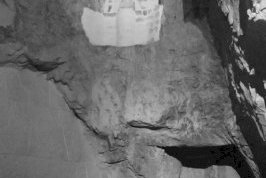
I do not drink wine regularly and champagne even less so; I’m fairly sure I could count the occasions on my fingers. Therefore, I was not particularly looking forward to this site and tacked on a tour of the Taittinger wine cellars to a daytrip to Reims from Paris. The tour begins from the Champagne House 2.5 km southeast from the main station of Reims. If walking, the route has a very gentle incline up Saint-Nicaise Hill and goes right past the Cathédrale Notre-Dame and the Palais du Tau. It is easy to divert to Basilique Saint-Remi to complete the set for the Reims site on the way there or the way back. Unlike some of the other manufacturers, which resemble grand mock castles, the Taittinger buildings above ground were unremarkable. I was a little afraid I would be the only one on the tour and my lack of knowledge about wine would lead to an awkward experience but I was, for once, grateful to see a reasonably large group gather in the reception/waiting room before the tour began. Decorative champagne bottles adorned the walls with a model of the old abbey that once stood upon this hill in the centre of the room. The cheapest ticket (as of late 2022) was 27€ including a single glass of champagne at the end. More expensive packages were available with additional glasses for the connoisseur. There was an option for a tour without tasting for 13€ but the website said this was …
Keep reading 0 comments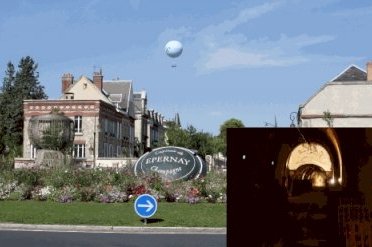
August 2018 - it was my birthday and we entered Epernay at around 10 am. Champagne, thats not just sparkling wine, there is style, inventor spirit and history behind it. We could not just drive through the wineyards and tick the site of. On the Avenue de Champagne we passed numerous luxus brands and couldnt realy decide.
We visited Castellane and Mercier. The promised train ride underground throught the champagne cellars, was just too promising for a birthday present. Since my wife was pregnant, I had to taste the champagnes on my own. Mercier exhibits the bighest Champagne cask, made for the Expo in Paris, Castellane has the most impressive headquarter. The underground cellars are impressive and massive. Just Mercier has kilometeres of shafts filled with bottles. We learned about the Methode Champigneuse and the constutuition of grapes typical for that drink.At the end of the tour we hade some differnet sorts of Champagne. You can visist almost all of the Champagne porducers.
After our stay in Epernay, we drove to Hautvillers and visited another small Champgane producer. From here you have beautiful view on the vineyards. Finally we reached Reims. A fabulous town, but we concentrated on visiting the Cathedral and some modern architecture. But the whole town is filled with champagne merchandise.
Definitely the big drinks should have their own whs sites. Still hoping for breweries and destilieris on the list. An of course hops growing regions.
Keep reading 0 comments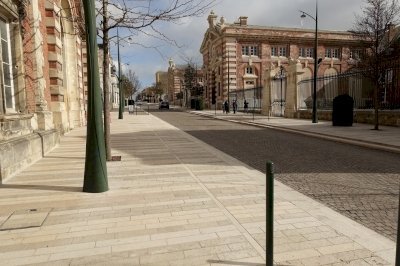
Twenty or so years back my aunt and I had visited Reims. We had been to the cathedral and visited the city center. But we skipped on the hills where the Champagne houses are; it's not in walking distance from downtown and at the time it wasn't a tourist attraction.
This time we skipped past the city center and went directly up the hill. It's really impressive when you pull in. The Champagne houses are large estates, half factory, half palace.
It's interesting how the marketing influenced the architecture and the presentation. When you visit the Pommery cellars for instance, you will see plenty of art on exhibition. While this may seem like a fancy tick, this is part of the original marketing conceived by Ms Pommery back in the 19th century.
In Reims we managed to see the Pommery Cellar and the St Nicaise hill. We passed by Taittinger and Martel but both houses were closed on Sundays. In Epernay we visited Fort Chabrol and the stellar Avenue de Champagne.
If I had to pick between Reims and Epernay I would probably opt for Epernay as you are closer to the vineyards. In Reims I was really wondering if there is wine at all in the Champagne. Overall, this is a pretty great site for a wine site. The 19th century architecture really sets it apart from other vineyards.
Getting There
There are TGV trains to Champagne Ardeche on the outskirts of Reims …
Keep reading 0 comments
Visited Pommery champagne house in August 2018. It should be pre-booked in advance through the official web site. The guide told fascinating story of the house, Madam Pommery and champagne making process. One of the cellar rooms contains the most prominent bottles, including a bottle of the first original brut created in 1874 (only one of two perfect vintage years, when no additional sugar is needed). There is also artwork inside the cellars – large sculptures completed in 1884 by Gustave Navlet. Currently the cellars a part of large Vranken Pommery Monopole Group with sales of 300 million euro and 800 employees. Champagne testing followed the tour and it is amazing. In overall, good experience and interesting truly unique region.
Keep reading 0 comments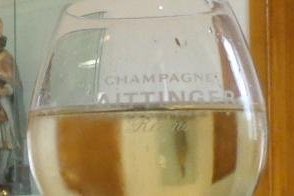
In the morning before the flight from Paris back to Berlin I decided to visit the Taittinger Cellar of the Champagne WHS so that I can finish off this part of France.
After some scuffle with the French police at the Gare de Paris-Est (while I was using a toilet on TGV, 2 men stole my wheeled bag from the luggage rack only to be arrested once they got off the train with my bag, all before the departure), I arrived at the Cellar in Reims in time for my English tour.
The tour was fine, and the glass of Champagne to cap the tour was even finer. I believe the color of their product, shown in the photo, seconds the OUV of this WHS.
But I regretted that this trip to Reims was so hastily organized that I didn't manage my time in Reims well and couldn't even view the phantasmagorical Pommery Champagne house. I did manage, however, to squeeze in a visit to the St. Remi Abbey, another WHS, near the Taittinger Cellar.
Keep reading 0 comments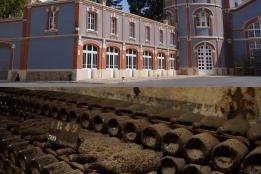
The Champagne WHS consists of three elements: the vineyards around Hautvillers and Ay, the architecture of the Champagne houses in Epernay and on the Saint-Nicaise Hill in Reims, and the network of chalk cellars in the subsoil of these sites.
We started exploring this WHS in Epernay. We left our car in a large parking lot in the town centre near the western end of the Avenue de Champagne. The Avenue de Champagne is about 1.5 kilometres long, the Champagne Houses are lined up next to each other on both sides of the street. Well, "Houses" is clearly an understatement, the terms chateaux or mansions are more applicable. Most of them were built in the 19th century. The Moet & Chandon company has the largest building and it is also the best known brand, most of the other names I had never heard before. Several of the Champagne Houses offer guided tours to the cellars, Le Castellane (easy to find because of the striking water tower) can be visited without pre-booking.
Next, we headed to the villages and vineyards north of Epernay. Hautvillers is the most picturesque village and is regarded as the birthplace of Champagner. The Benedictine monk Dom Perignon was in the 17th century the cellarer of the Abbey of St Peter. He significantly contributed to the development of the Méthode champenoise, the second fermentation in bottles, and the blending of different grape varieties. And a legend says that he also introduced the bottle size of 0.7 liters, …
Keep reading 0 comments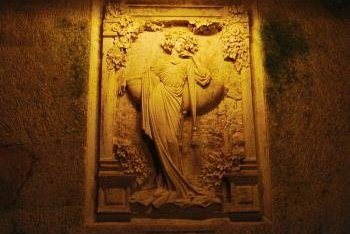
The inscription of Champagne did remind me the first time when I visited the city of Reims in 2006. The main reason to visit was to see the famous Cathedral. When I reached the youth hostel, I saw a brochure of champagne cellar tour and really captured my interest. I immediately decided to walk to the champagne house area; on the way I stopped to see the World Heritage Site of former abbey of Saint Remi. After some direction confusing and old record shops browsing, I finally arrived at the front gate of the champagne house of Pommery. In 2006 the name of the house was still just Pommery and opened to public tour with no need of reservation. My first impression on the place was “is this really a champagne house!” since I saw a complex of many types of architecture from medieval castle-liked building, Gothic building with fake turrets and conical roof towers next to very neo classical building. Not only that there was a modern contemporary statue guarding the door. I was not sure that I could consider the place to be bizarre or tasteless or inspiring.
Anyway, I entered into this champagne house and found the sign of ticket booth. There were three types of ticket to choose, cellar tour with one tasting, cellar tour with Grand Cuvee tasting, and just cellar tour. I could not remember the price, but I remembered I chose the cellar tour with one tasting, the Grand Cuvee was …
Keep reading 0 comments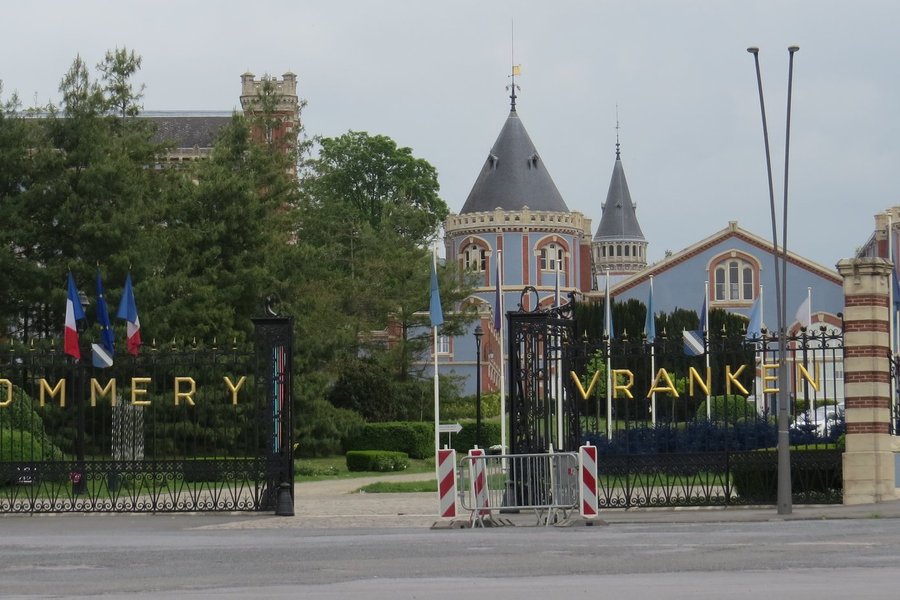
Champagne Hillsides, Houses and Cellars is another candidate for inclusion this year. And it's another serial nomination: it comprises 14 locations in the Champagne-Ardenne region in the North East of France. On my way to the WHS of Vézélay and the Abbey of Fontenay, I spent Ascension Thursday in Reims to check out a couple of these Champagne sites.
I rarely drink alcohol, so all these wine-related (T)WHS are a particular chore for me to tick off. Fortunately, this nomination focuses more on the industrial and commercial process of champagne production than on endless hillside vineyards. With this cleverly chosen angle of argumentation, I believe the Champagne sites also distinguish themselves enough to warrant WH status. The sites are presented as a continuing evolved cultural landscape, too, which, for sure, must please some of the jurors. And to top it off, these sites (or at least their products) are globally known: "The outstanding nature of Champagne also lies in its symbolic aspect, shared across the world".
Among the special features of this WHS are the Cellars: underground chalk chambers that hold the bottles of champagne until the contents are ready to be consumed. You can visit the cellars on a tour of one of the Champagne Houses. They all seem to do tours as a form of publicity or a way to earn something extra. I chose to visit Taittinger in the Champagne quarter of Reims. This is the only one of the major houses that offers tours without pre-booking. …
Keep reading 0 comments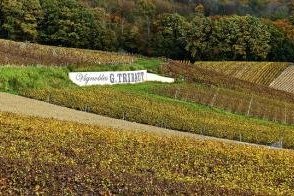
I visited this TWHS in June 2013 unknowingly but in November 2014 I made up for it by staying at a small champagne-maker. I visited a number of chalk cellars (Veuve Cliquot, Marcier, Taittinger, etc.) with guided tours varying from 30 mins to 2hrs. My favourite cellar was Pommery's together with the Art Nouveau Villa Demouseille. I explored the famous Avenue de Champagne in Epernay and enjoyed visiting the Comtesse Lafond Castle. Finally I visited several small towns nestled in the Champagne vineyard hills such as Dizi and Hautvillers. In Hautvillers I visited the tomb of Dom Perignon and then walked through the vineyards of Moet & Chandon to a panoramic viewpoint. Hautvillers is a very quaint village, famous for its wrought iron signs. Most probably this site will be inscribed in 2015.
Keep reading 0 comments
